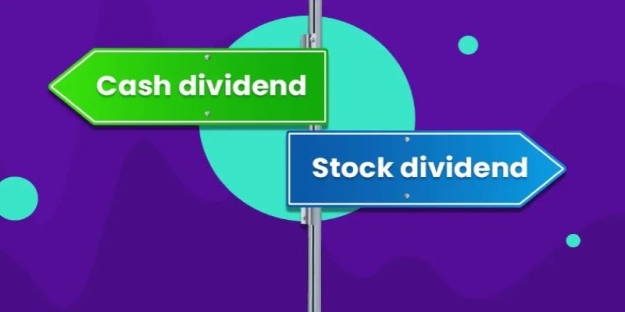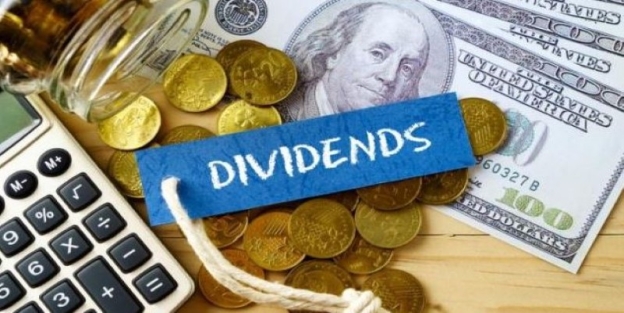
What Are Dividends And How Do They Work?
Tooba
Ever wondered why some companies pay their shareholders money just for owning their stock? That’s not magic — it’s called a dividend. For many investors, dividends are more than just a bonus; they’re a steady source of income and a sign of a company’s health. But what exactly are dividends, and how do they fit into the bigger picture of investing? Let’s break it down in plain language.
What Are Dividends
A dividend is a payment made by a company to its shareholders, usually from its profits. Think of it as the company’s way of sharing a portion of its earnings with the people who own it.
Not every company pays dividends. Some reinvest all their profits into growing the business. Others, especially well-established firms, distribute part of their profits regularly. Dividends are most common among large, financially stable companies in industries like utilities, banking, and consumer goods.
Example: If you own 100 shares of a company that declares a $1 dividend per share, you’ll receive $100 in dividend payments — regardless of whether the stock price goes up or down.
How Companies Decide To Pay Dividends?
The decision to pay dividends comes from the company’s board of directors. They look at earnings, cash flow, growth plans, and market conditions before announcing a payout. Once declared, the company sets key dates investors should know:
- Declaration Date – When the company announces the dividend amount and payment schedule.
- Record Date – You must own the stock on this date to receive the dividend.
- Payment Date – The day the dividend lands in your account.
Example: A company may declare on March 1 that it will pay a $0.50 per share dividend to shareholders on record as of March 15, with payment sent out on April 1.
Cash Vs. Stock Dividends

Most people think of dividends as cash deposits into their brokerage account, but companies sometimes pay dividends in shares of stock instead.
- Cash Dividends – The most common type. Money is directly transferred to shareholders.
- Stock Dividends – Instead of cash, you receive additional shares. This can be appealing if you want to grow your investment without spending more money.
Example: If you hold 200 shares and the company issues a 5% stock dividend, you’ll get 10 extra shares.
Dividend Yield And What It Tells You?
Investors often look at the dividend yield, a percentage that shows how much they earn in dividends relative to the stock's price.
Formula: Dividend Yield = (Annual Dividend per Share ÷ Stock Price) × 100
Example: A $2 annual dividend on a $50 stock equals a 4% yield. If the price drops to $40 but the dividend stays the same, the yield rises to 5%.
While a high yield can be attractive, it's not always a good sign. Sometimes, a high yield means the stock price has dropped because the company is struggling.
How Dividends Are Taxed?
Dividends aren’t free from taxes. In many countries, they’re classified as either qualified (lower tax rate) or ordinary (taxed as regular income). The rate you pay depends on local tax laws, your income bracket, and the length of time you've held the stock.
Example: In the U.S., qualified dividends are usually taxed at 0%, 15%, or 20%, while non-qualified dividends are taxed at your regular income rate.
The Role Of Dividend Reinvestment Plans (DRIPs)
Some investors prefer to reinvest dividends instead of taking them as cash. Many companies and brokerages offer Dividend Reinvestment Plans (DRIPs), which automatically use your dividend payments to buy more shares, often without commission fees.
Example: If you earn $50 in dividends and the stock is $25 per share, your DRIP would buy two more shares automatically. Over time, this can compound your investment growth.
Why Companies Pay Dividends?
Paying dividends sends a signal to investors that the company is financially healthy and confident about its future earnings. It can also help attract long-term shareholders who value steady income.
Some companies use dividends as part of their brand image. Utility companies, for instance, are known for consistent payouts over decades, building trust among investors.
Why Some Companies Don’t Pay Dividends?
On the other hand, many younger or fast-growing companies skip dividends entirely. They keep profits in the business to fund expansion, research, and innovation. Investors in these companies hope to make money from stock price growth rather than dividend income.

Example: Big tech companies like Amazon have never paid dividends, preferring to reinvest in their operations and acquisitions.
Risks And Things To Watch Out For
While dividends can be a reliable income stream, they’re not guaranteed. A company can reduce or eliminate dividends if profits fall or business conditions worsen.
Example: During economic downturns, even long-time dividend payers have cut payouts to preserve cash. In 2020, several major companies reduced dividends due to pandemic-related losses.
Another risk is chasing high yields without understanding the underlying reasons. A yield that looks too good to be true may signal trouble ahead.
Building A Dividend-Focused Portfolio
For investors seeking income, dividend-paying stocks can be a key part of a portfolio. Some mix them with growth stocks for balance. Others focus entirely on dividend growth, choosing companies with a history of raising dividends year after year.
Example: The “Dividend Aristocrats” are S&P 500 companies that have increased dividends annually for at least 25 years. These include well-known names like Coca-Cola, Johnson & Johnson, and Procter & Gamble, offering reliability, stability, and steady income for long-term investors seeking dependable returns over decades.
Final Word: Making Dividends Work For You
Dividends can play different roles depending on your goals. They can be a steady paycheck in retirement, a reinvestment tool for building wealth, or simply a sign of a company’s strength.
Whether you take the cash, reinvest it, or mix dividend stocks with other investments, understanding how they work helps you make better decisions. Just remember — the best dividend strategy isn’t about chasing the highest yield, but finding reliable, sustainable payouts that fit your financial plan and support your long-term financial stability and independence.




